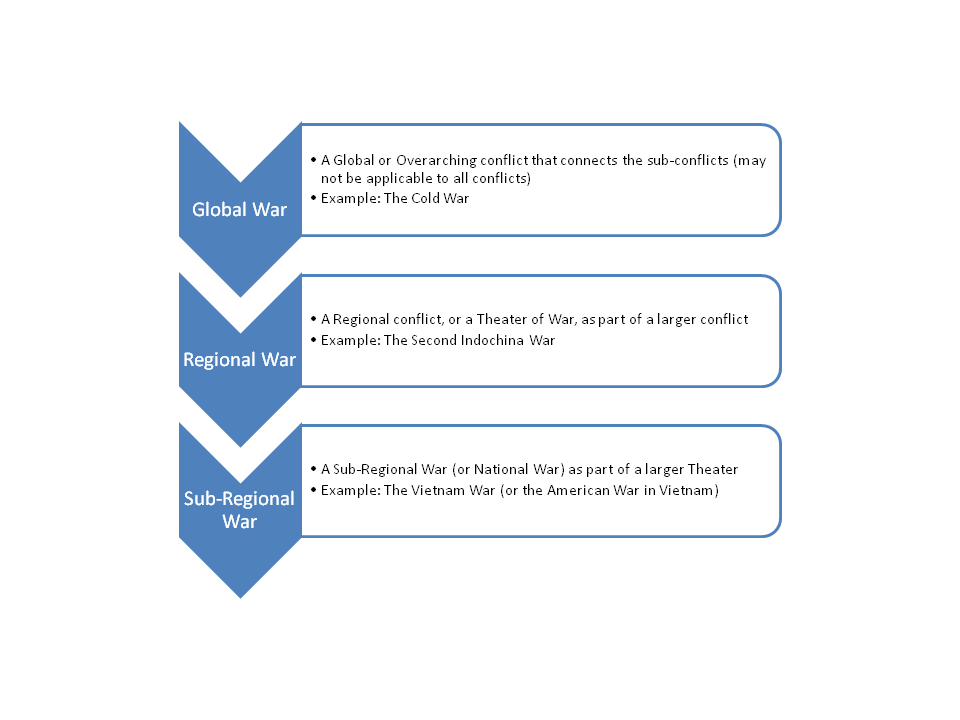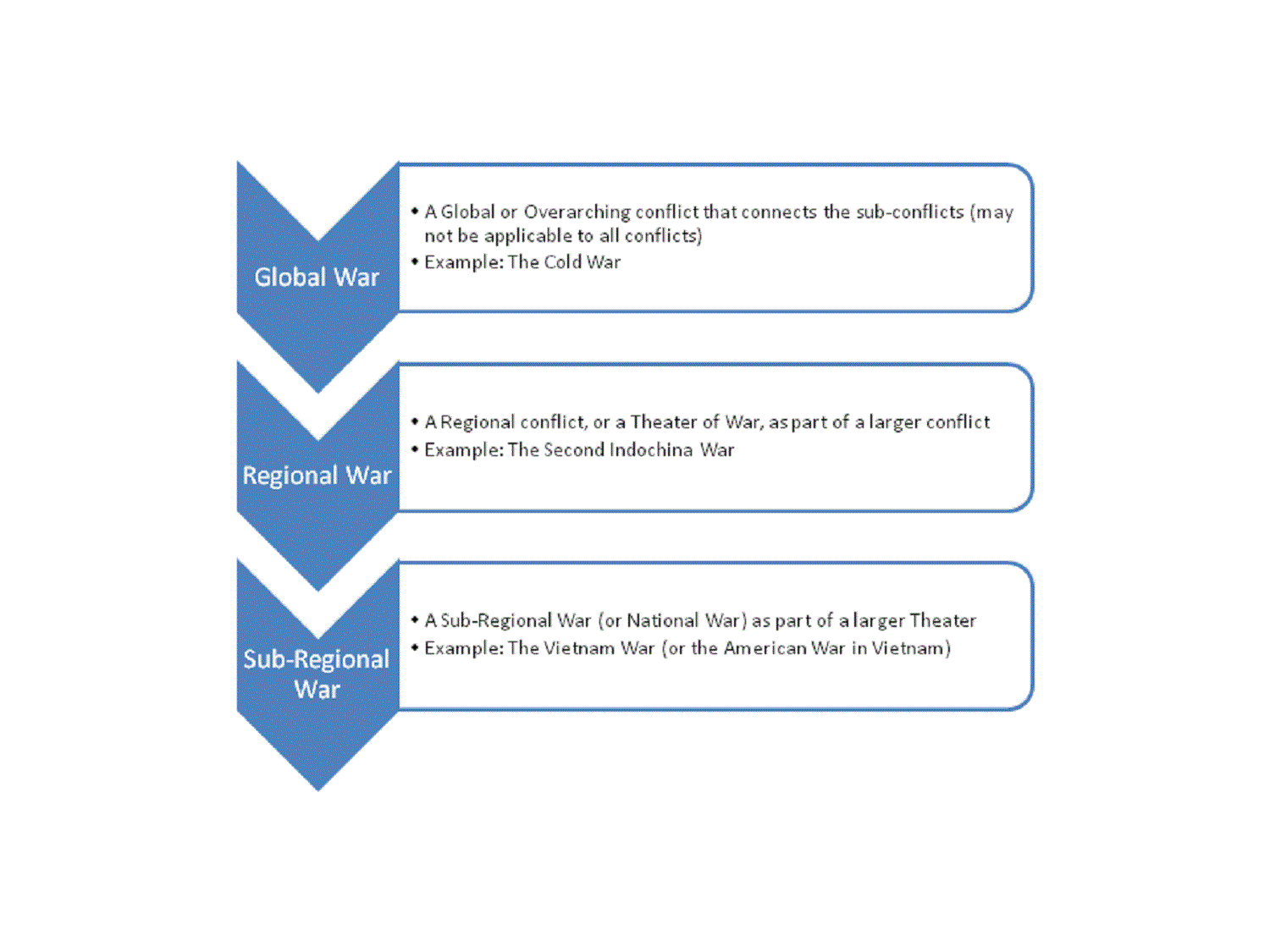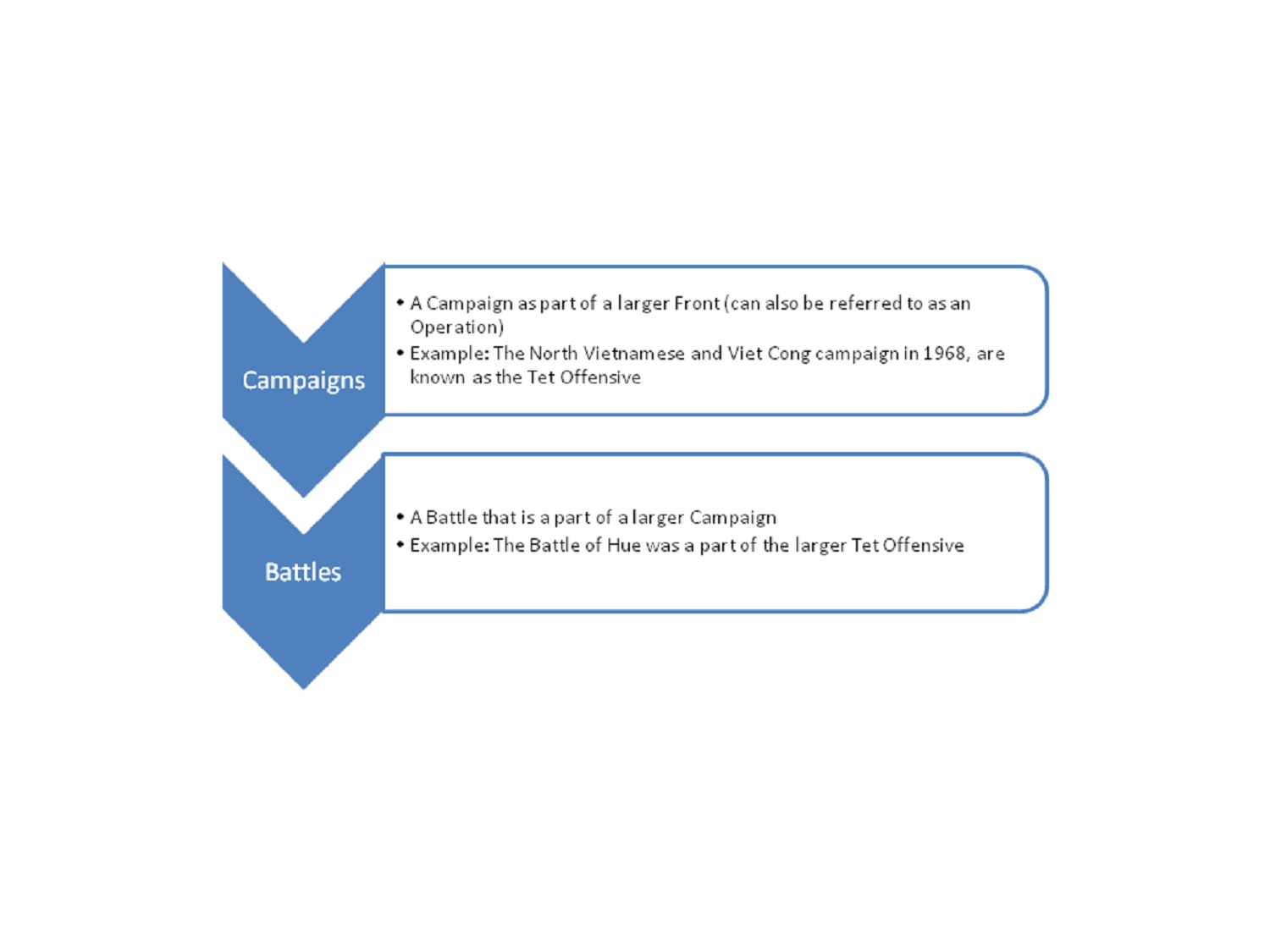
Taxonomy of Wars System to Classify Wars and Conflicts
The Historguy.com Taxonomy of Wars Classification System
Ever wonder about the Indochina Wars? Or World War Two? Or about our current wars on terrorists (variously called the War on Terror, the Long War, etc)? Sure you do. So do we, here at Historyguy.com. To help classify and categorize military conflicts like these, Historyguy.com has come up with a new method of classifying wars. This Taxonomy of Wars is explained below, along with how we developed this system to put wars and conflicts into easy-to-understand categories.
What do these wars (or, more accurately, these three series of wars), have in common?
They are all larger names for a series of related wars. The Indochina Wars, for instance, is a term used to lump together three distinct periods of warfare in the Southeast Asian region known as Indochina (i.e. Vietnam, Laos, Cambodia, and sometimes Thailand). The three periods of war are generally known as the First, Second, and Third Indochina Wars. And, in turn, each of these wars can be broken down into smaller, yet related, constituent wars, all under the general umbrella of the larger term. For example, look at the hierarchy tree for these wars below:
Indochina Wars
First Indochina War (1946-1954) -Also known as the French Indochina War
Viet Minh War (Vietnamese Communist rebels vs. France)
Pathet Lao War (Laotian Communist rebels vs. France)
Khmer Issarak War (Cambodian or Khmer Communist rebels vs. France)
Second Indochina War (1956-1975)
The Vietnam War
Laotian Civil War
Cambodian Civil War
Third Indochina War (1977-1991)
Cambodian-Vietnamese War
Sino-Vietnamese War
Vietnamese-Thai Border Conflict
Anti-Communist Insurgency in Laos
Thai-Laotian Border Conflict
As you can see, each of the larger “umbrella” wars contains smaller, specific wars that are inter-related. In addition, a larger, global war can be put above the larger Indochina Wars category: The Cold War, which was a global conflict that included many other wars, including all three Indochina Wars.
In the graphic below, we see how this method of organization, or hierarchy of wars within a larger meta-conflict applies to the conflict most Americans refer to as the “Vietnam War.”
We start with the larger, overarching Global Conflict, which, from 1946 to 1991, was the Cold War between the U.S., NATO, and the other ‘Western’ powers, against the Soviet Union, China, and the other ‘Communist’ powers. Then we go to the next level of conflict, the Regional War, which, in this example, is known as the Second Indochina War, which ran from 1956 to 1975, and included what is referred to as the Vietnam War, along with the related conflicts of the Laotian and Cambodian Civil Wars. This regional conflict can be further divided into the specific local, or sub-regional wars, such as the Vietnam War.
We can drill down even further, and divide the Vietnam War into Campaigns (or stages), and from there to individual battles.
As we analyze and categorize wars and conflicts, we see that many larger conflicts, such as the Cold War, World War Two, as well as the current wars on terrorism, can all be divided and sub-divided into their smaller, constituent parts. To create these flowcharts showing a taxonomy of military conflicts, we borrow from the world of science, specifically from the classification systems created by Carl Linnaeus, who created what is known as the “Linnaean Taxonomy.” In the biological sciences, the highest level of the taxonomy is the Domain, followed by Kingdom, and Phylum.
In our taxonomy of wars, we follow the same general steps as the Linnaean taxonomy. As we see, below, with the biological taxonomy compared to our taxonomy of wars:
| Domain |
Global War |
| Kingdom | Regional War |
| Phylum | National War |
| Class | Campaigns |
| Order | Battles |
The Historyguy.com website will continue to apply our Taxonomy of Wars to other conflicts to further the classification and order of these historical events.


